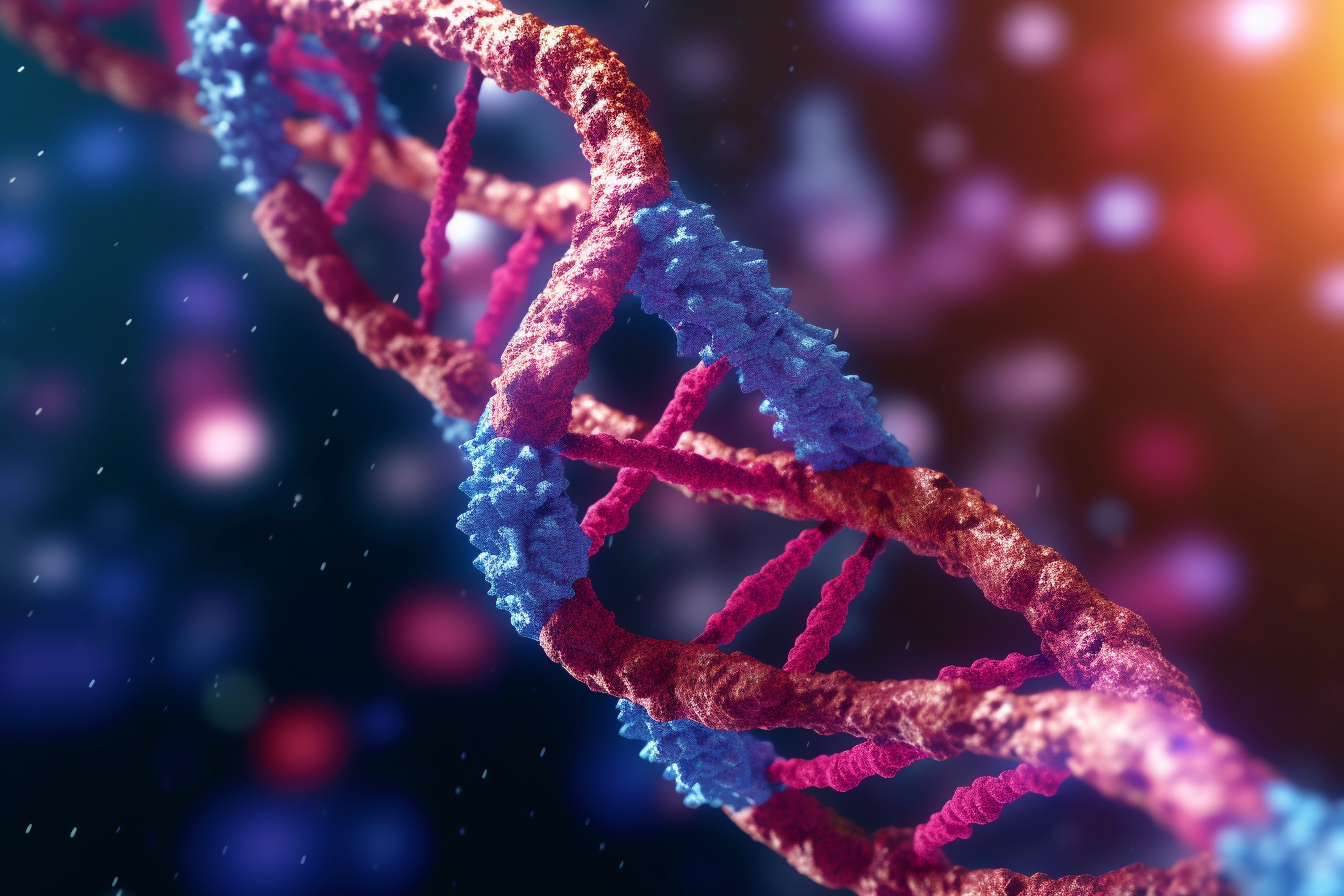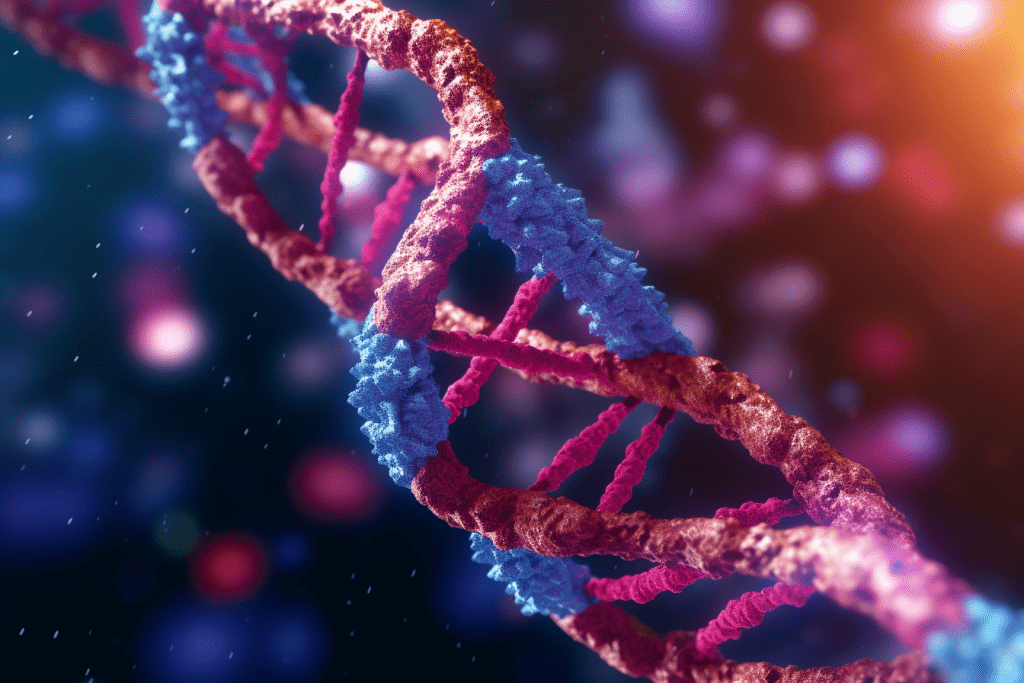Nucleic Acid Monomers: Building Blocks
 12 months ago
By John Lewis Elopre
12 months ago
By John Lewis Elopre

Nucleic acids are fundamental molecules in the world of biology, serving as the information carriers of life itself. These complex biomolecules are composed of smaller units known as nucleic acid monomers. In this article, we’ll take a deep dive into the basics of nucleic acid monomers, exploring their significance, structure, and role in DNA and RNA.
Nucleic acids, such as DNA (deoxyribonucleic acid) and RNA (ribonucleic acid), play a pivotal role in storing, transmitting, and expressing genetic information. At the core of these intricate molecules are nucleic acid monomers, the building blocks that make up the long chains of DNA and RNA.
Understanding Nucleic Acid Monomers
Nucleic acid monomers, also known as nucleotides, are the individual units that constitute DNA and RNA. Each nucleotide is composed of three essential components: a phosphate group, a sugar molecule (deoxyribose for DNA and ribose for RNA), and a nitrogenous base. These nitrogenous bases come in four types: adenine (A), thymine (T, only in DNA), cytosine (C), guanine (G), and uracil (U, only in RNA).
DNA: The Blueprint of Life
DNA, often referred to as the blueprint of life, holds the genetic instructions necessary for the development, functioning, and reproduction of living organisms. The sequence of nucleic acid monomers in DNA encodes the information required to build and maintain an organism.
RNA: From Transcription to Translation
RNA plays a vital role in translating the genetic information stored in DNA into functional proteins. The process involves several steps, including transcription, where a specific segment of DNA is transcribed into a complementary RNA strand.
The Structure of Nucleic Acid Monomers
The intricate structure of nucleic acid monomers forms the basis of DNA’s double helix. The sugar-phosphate backbone provides stability, while the nitrogenous bases extend inward, forming complementary base pairs through hydrogen bonding.
The Role of Hydrogen Bonding
Hydrogen bonds between the nitrogenous bases adenine (A) and thymine (T), as well as cytosine (C) and guanine (G), ensure the specific pairing required for accurate DNA replication and transcription.
The Double Helix: A Structural Marvel
The double helical structure of DNA, proposed by James Watson and Francis Crick, revolutionized our understanding of genetics. This elegant configuration allows for efficient storage and replication of genetic information.
Replication: Ensuring Genetic Continuity
DNA replication is a remarkable process by which a parent DNA strand serves as a template to synthesize a complementary daughter strand. This fidelity ensures the continuity of genetic information during cell division.
Transcription: Rewriting the Code
Transcription is the first step in gene expression, where a segment of DNA is transcribed into a single-stranded RNA molecule. This RNA molecule, known as messenger RNA (mRNA), carries the genetic code to the ribosomes for translation.
Translation: From Nucleic Acids to Proteins
Translation is the process of protein synthesis, occurring at the ribosomes. Transfer RNA (tRNA) molecules, each specific to an amino acid, read the mRNA codons and assist in assembling the amino acids into a polypeptide chain.
Mutations and Their Consequences
Mutations, alterations in the DNA sequence, can have varying effects on an organism. Some mutations are harmless, while others can lead to genetic disorders or even provide evolutionary advantages.
Epigenetics: Beyond the Genetic Code
Epigenetics explores heritable changes in gene expression that do not involve alterations in the DNA sequence itself. This field highlights the influence of environmental factors on gene activity.
Nucleic Acid Monomers in Medicine
The understanding of nucleic acid monomers has paved the way for groundbreaking medical advancements, including gene therapy and personalized medicine.
Future Prospects and Research
Continued research into nucleic acid monomers holds the promise of unraveling more mysteries of genetics, potentially leading to novel treatments and a deeper understanding of life itself.
Conclusion
In essence, nucleic acid monomers serve as the essential building blocks of DNA and RNA, the molecules that underpin the genetic fabric of all living organisms. Their intricate structure, hydrogen bonding, and complementary base pairing mechanisms are at the heart of genetics and molecular biology. As our knowledge deepens, the potential for transformative discoveries in medicine and beyond becomes increasingly evident.
FAQs
1. What are nucleic acid monomers? Nucleic acid monomers, or nucleotides, are the individual units composing DNA and RNA. They consist of a phosphate group, a sugar molecule, and a nitrogenous base.
2. How do nucleic acid monomers form a double helix? The nitrogenous bases adenine (A) pairs with thymine (T), and cytosine (C) pairs with guanine (G) through hydrogen bonds, forming the complementary base pairs that create the double helix structure of DNA.
3. What is the role of RNA in gene expression? RNA plays a crucial role in gene expression by transcribing the genetic information from DNA and translating it into functional proteins.
4. How do mutations impact organisms? Mutations can have diverse effects on organisms, ranging from negligible to harmful or beneficial, depending on their nature and location within the DNA sequence.
5. What is epigenetics? Epigenetics explores changes in gene expression that are not caused by alterations in the DNA sequence itself, shedding light on the interaction between genes and the environment.

Navigating the Complex World of Global Regulatory Affairs in Oncology
In today's fast-paced global pharmaceutical landscape, the regulatory affairs sector plays a pivotal role in ensuring the safety, efficacy, and market access of oncology drugs. As the demand for innovative cancer therapies continues to grow, understanding the intricacies of global...
11 months agoNavigating the Complex World of Global Regulatory Affairs in Oncology
In today's fast-paced global pharmaceutical landscape, the regulatory affairs sector plays a pivotal role in ensuring the safety, efficacy, and market access of oncology drugs. As the demand for innovative cancer therapies continues to grow, understanding the intricacies of global...
11 months ago
The Vital Role of Institutional Review Boards (IRBs) in Oncology Research
In the world of medical research, ethics play a paramount role. Researchers, especially in fields like oncology, are constantly striving to find innovative solutions and treatments to combat cancer. However, these advancements must be achieved within the boundaries of ethical...
11 months agoThe Vital Role of Institutional Review Boards (IRBs) in Oncology Research
In the world of medical research, ethics play a paramount role. Researchers, especially in fields like oncology, are constantly striving to find innovative solutions and treatments to combat cancer. However, these advancements must be achieved within the boundaries of ethical...
11 months ago
Data Privacy and Security in Oncology Trials
In today's digital age, data privacy and security have become paramount concerns across various industries, including healthcare. Within the realm of clinical research, particularly in oncology trials, safeguarding patient data is of utmost importance. This article delves into the critical...
11 months agoData Privacy and Security in Oncology Trials
In today's digital age, data privacy and security have become paramount concerns across various industries, including healthcare. Within the realm of clinical research, particularly in oncology trials, safeguarding patient data is of utmost importance. This article delves into the critical...
11 months ago